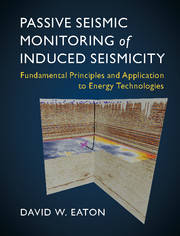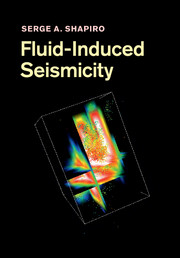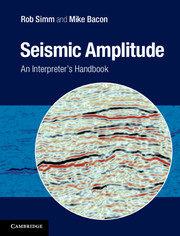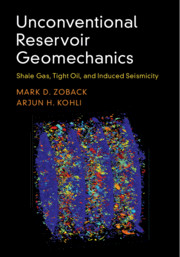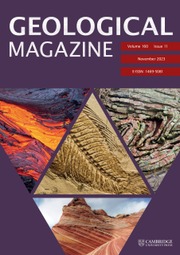Passive Seismic Monitoring of Induced Seismicity
The past few decades have witnessed remarkable growth in the application of passive seismic monitoring to address a range of problems in geoscience and engineering, from large-scale tectonic studies to environmental investigations. Passive seismic methods are increasingly being used for surveillance of massive, multi-stage hydraulic fracturing and development of enhanced geothermal systems. The theoretical framework and techniques used in this emerging area draw on various established fields, such as earthquake seismology, exploration geophysics and rock mechanics. Based on university and industry courses developed by the author, this book reviews all the relevant research and technology to provide an introduction to the principles and applications of passive seismic monitoring. It integrates up-to-date case studies and interactive online exercises, making it a comprehensive and accessible resource for advanced students and researchers in geophysics and engineering, as well as industry practitioners.
- Presents real field data demonstrating how passive seismic monitoring works in practice
- Interactive online problems are provided, enabling readers to test their knowledge and understanding
- Provides an interdisciplinary overview of the topic combining fundamental and applied elements
Reviews & endorsements
'It is now well established that human activities in the subsurface create induced seismicity. While large events can be extremely problematic from both a seismic hazard and operational safety perspective, smaller induced events, known as microseismic events, can tell us a great deal about changes in the subsurface. Eaton provides a clear and comprehensive description of such seismicity, starting from first principles and then progressively taking the reader through to real examples and case studies. A focus is on seismicity associated with oil and gas exploitation, but the book will also appeal to scientists interested in seismicity in a range of other settings (e.g., geothermal, mining, etc.). Eaton has crafted an excellent seismology text for students and earthquake seismologists in general.' Michael Kendall, University of Bristol
'Passive Seismic Monitoring of Induced Seismicity is a comprehensive textbook covering basic theoretical concepts of seismic and ancillary topics through to practical implementation in industrial settings. The book is an essential reference text on this topical technology.' Shawn Maxwell, Itasca Microseismic and Geomechanical Evaluation
'This comprehensive text is a much-needed and timely overview of topics related to seismic monitoring of induced earthquakes. It not only provides a thorough treatment of how microseismic monitoring is done and the data are analyzed, it provides a valuable overview of how and why injection-induced seismicity occurs.' Mark Zoback, Stanford University, California
Product details
April 2018Hardback
9781107145252
360 pages
254 × 192 × 22 mm
1.01kg
Available
Table of Contents
- Preface
- List of symbols
- Part I. Fundamentals of Passive Seismic Monitoring:
- 1. Constitutive relations and elastic deformation
- 2. Failure criteria and anelastic deformation
- 3. Seismic waves and sources
- 4. Stress measurement and hydraulic fracturing
- Part II. Applications of Passive Seismic Monitoring:
- 5. Passive-seismic data acquisition
- 6. Downhole microseismic processing
- 7. Surface and shallow-array microseismic processing
- 8. Microseismic interpretation
- 9. Induced seismicity
- Appendix A. Glossary
- Appendix B. Signal-processing essentials
- Appendix C. Data formats
- References
- Index.

